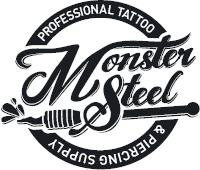Victory Stamps: Breast Cancer Survivors Turn to Tattoos
Under the bright lights at a tattoo parlor in Western Massachusetts, Melinda Shaw isn’t worried about lifting her tight-fitting tank top over her head to expose her breasts.
The 55-year-old breast cancer survivor is among a growing number of women who have turned to body art to cover the scars left by a mastectomy and, in some ways, gain control of a condition they have struggled to grasp.
Tiffany Matrone, the owner of Bang Bang Body Art, says about seven women recovering from cancer have come into her Northampton shop looking to get the remnants of their mastectomies tattooed. Some chose hearts to cover the scars where their nipples once were. A majority of the clients select floral designs. Shaw decided on a vine with budding purple flowers to drape around the scars and accentuate her marks.
The meaning behind the work is what drives Kerry Soraci, a tattoo artist at Iron Age Studio, in University City, Mo., who specializes in creating the illusion of real nipples on breast cancer survivors.
“These women have been robbed of a part of and of a time of their life and their body,” Soraci, who tattooed her first cancer survivor two decades ago and works typically with about five women a month, told the St. Louis Post-Dispatch. “Now, they have an opportunity to reclaim it.”
Mastectomies are on the rise. About 247,000 new breast cancer cases were predicted to be diagnosed in the United States last year. Of those women in the early stages, according to the American Cancer Society, more than a one-third will choose to undergo a mastectomy. What’s more, the number of women who have chosen to remove a healthy breast as a preventative measure has tripled in the past decade.
These patients can either remain without bosoms after surgery or undergo breast reconstruction. But, Gustavo Mitchell, president of Monster Steel, a Palm Beach Gardens, Fla.-based e-commerce provider of tattoo supplies, said body art gives these women another option beside breast reconstruction.
“Plastic surgeons do not always offer the skin coloring tools and pigments that can keep the nipple from fading over time,” he said. “A body artist understands how to blend color combinations, shade and highlight areas to complement skin tone.”
Soraci, who holds a degree in fine arts from Washington University, is adept at creating 3D illusions that can transform a scar into a victory stamp, a sort of freedom statement, a picture of good health that instills confidence in her subjects.
“It’s one thing they have control over after 18 months of treatment,” said Dr. Theresa Schwartz, a breast surgeon at St. Louis University Hospital who sends her patients to Soraci. “Plastic surgeons are not graphic artists. And they can’t do anything different. The tattoos are a means of self-expression. It’s realizing you have a new beginning once you’re done with treatment.”
Samantha Paige chose to have a double mastectomy. The 41-year-old model and artist had already survived thyroid cancer after testing positive for the BRCA1 gene, a mutation that marks an increased risk of cancers in both women and men. Paige said after reconstructive surgery the implants never felt right. So, she chose to have them removed. In a new advertising campaign for Equinox fitness clubs, Paige poses topless in the chair of a tattoo artist. She hopes to inspire other cancer survivors -- scars, tattoos and all.
Photo by Steven Klein / Equinox

